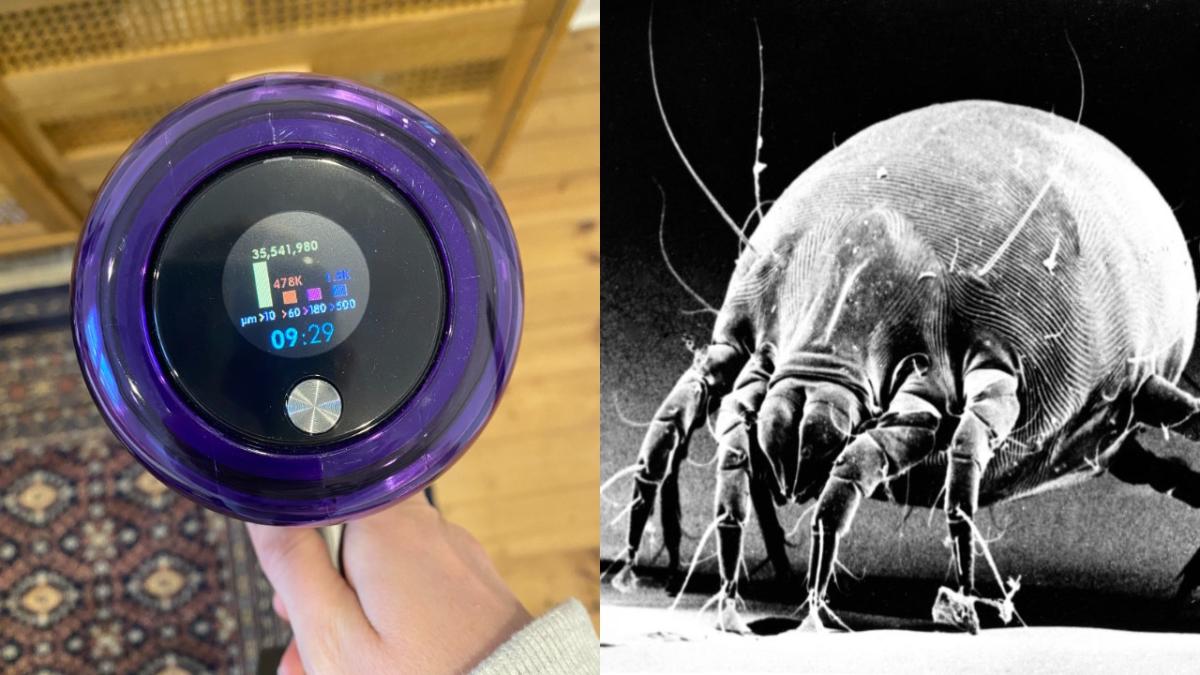
Do you know how many dust mites are in your mattress? Do you really want to know? Dyson’s newest sucky boi will tell you, and once you KNOW, there’s no going back.
I’ve been obsessed with my Dyson vacuum (the old V8) since I bought it at the beginning of lockdown 1.0. A grown-up purchase for a semi-grown up person. A real step-up from whatever third-hand-me-downs I’ve been using in sharehouses my whole life, you know? I showed it off proudly to visitors when they were (eventually) allowed to come round, is what I’m saying.
But the newest offering from Dyson, the V15 Detect, blows it clean out of the water – the operative word being clean. Removing dust and crummies is the purpose of any vacuum, but the Dyson V15 doesn’t just suck them all up, it shows you how much (and what) you’ve sucked up. I’m talking dust mites, baby: tens of thousands of dust mites.
Here’s how it works: each sucky boi is equiped with a thing called an acoustic piezo sensor. It separates and counts particles as you clean (at a rate of 15,000 times a second), dividing them into four categories based on size:
- Under 10μm (micrometres) – allergens and pollens
- Under 100μm – microscopic dust and skin flakes (yuk)
- Under 180μm – dust mites (double yuk) and other particles the size of fine sand
- Under 500μm – fleas (YUK ABSOLUTELY NOT) and other particles the size of sugar
As you vacuum, the numbers for each section go up based on how much you’re sucking up. The aim is that you know when a spot is ‘clean’ and you can move on, as well as adjusting the power automatically based on the amount of suction you need.
In a way, it’s HORRIFYING. And yet, also deeply satisfying. I tested out the function on a few spots around the house, so please enjoy these before and afters.
My kitchen floor
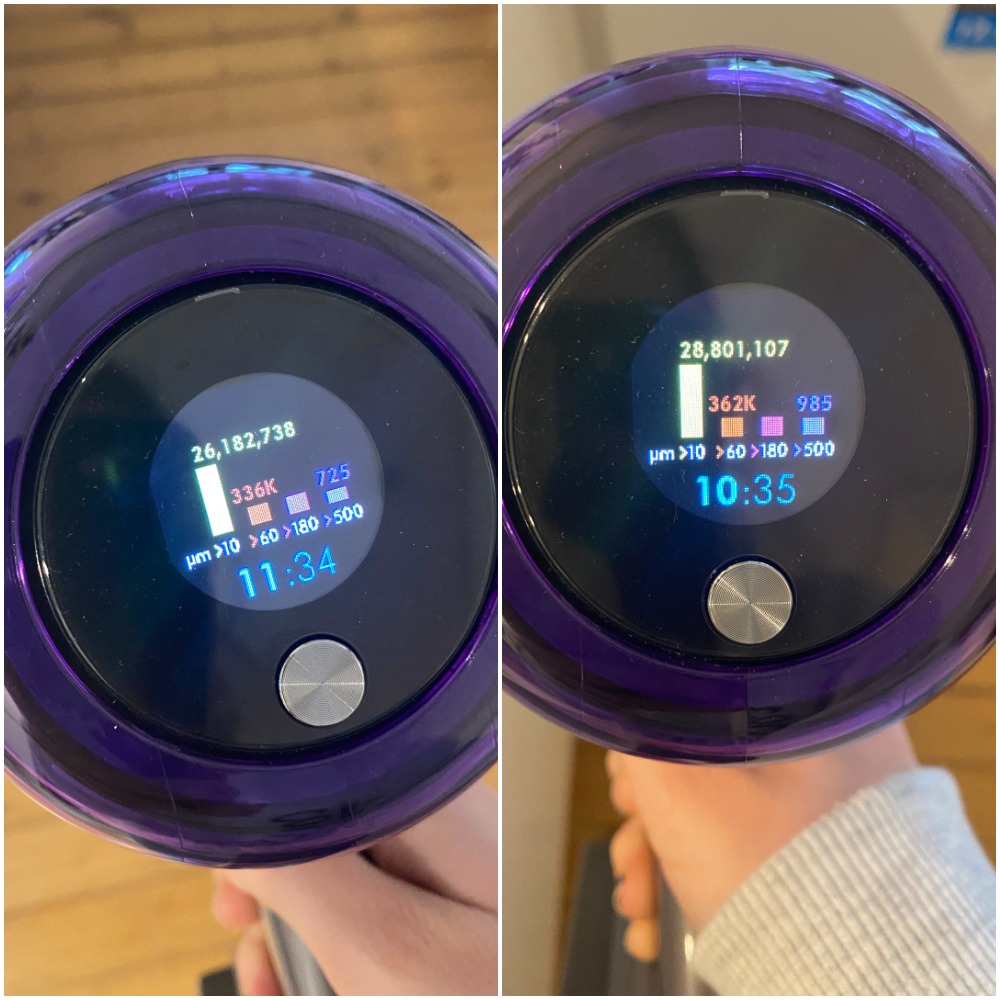
My mattress
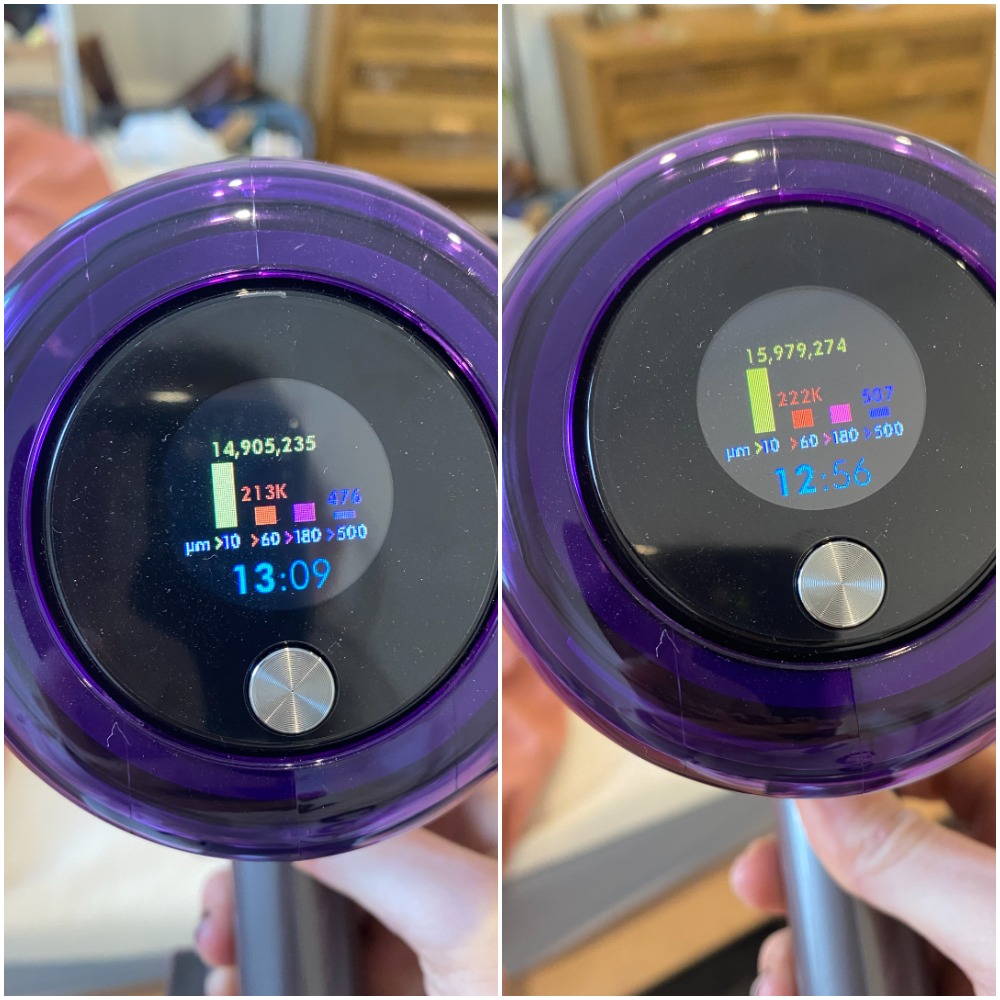
The patch of floor next to my bed
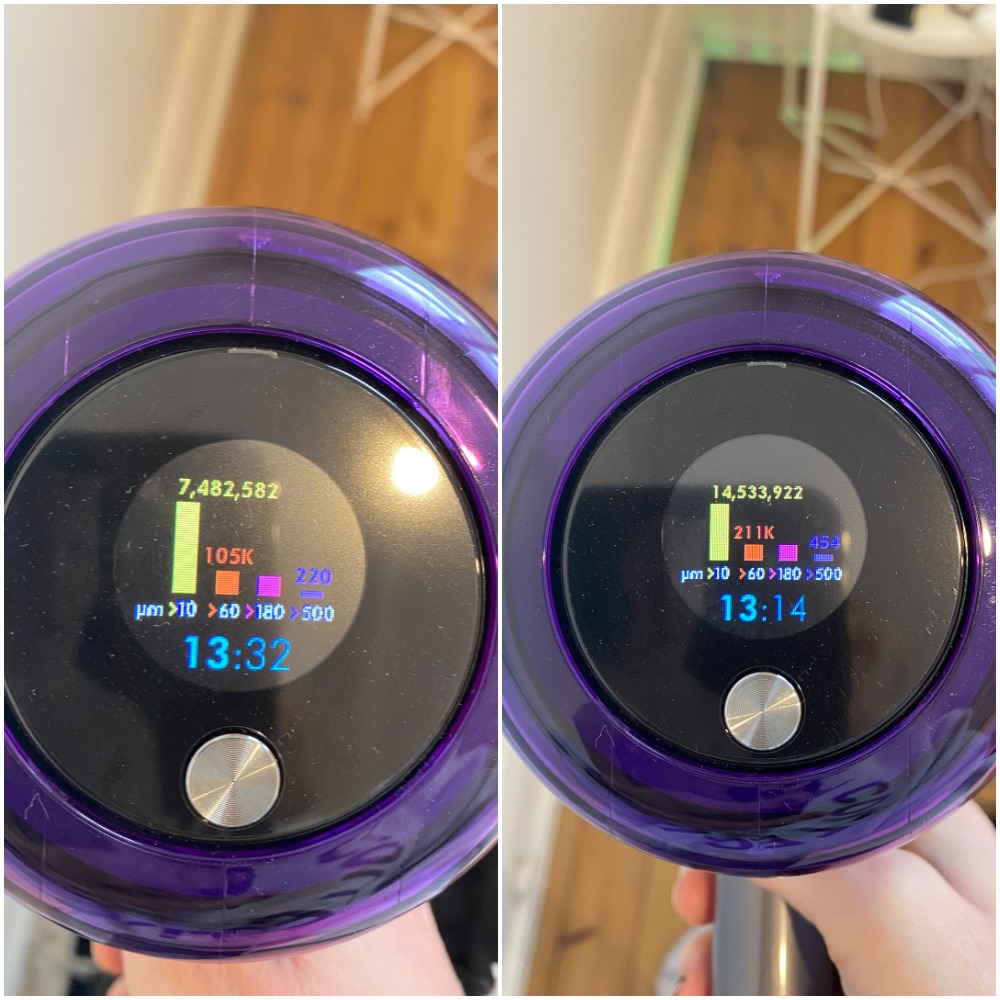
My rug
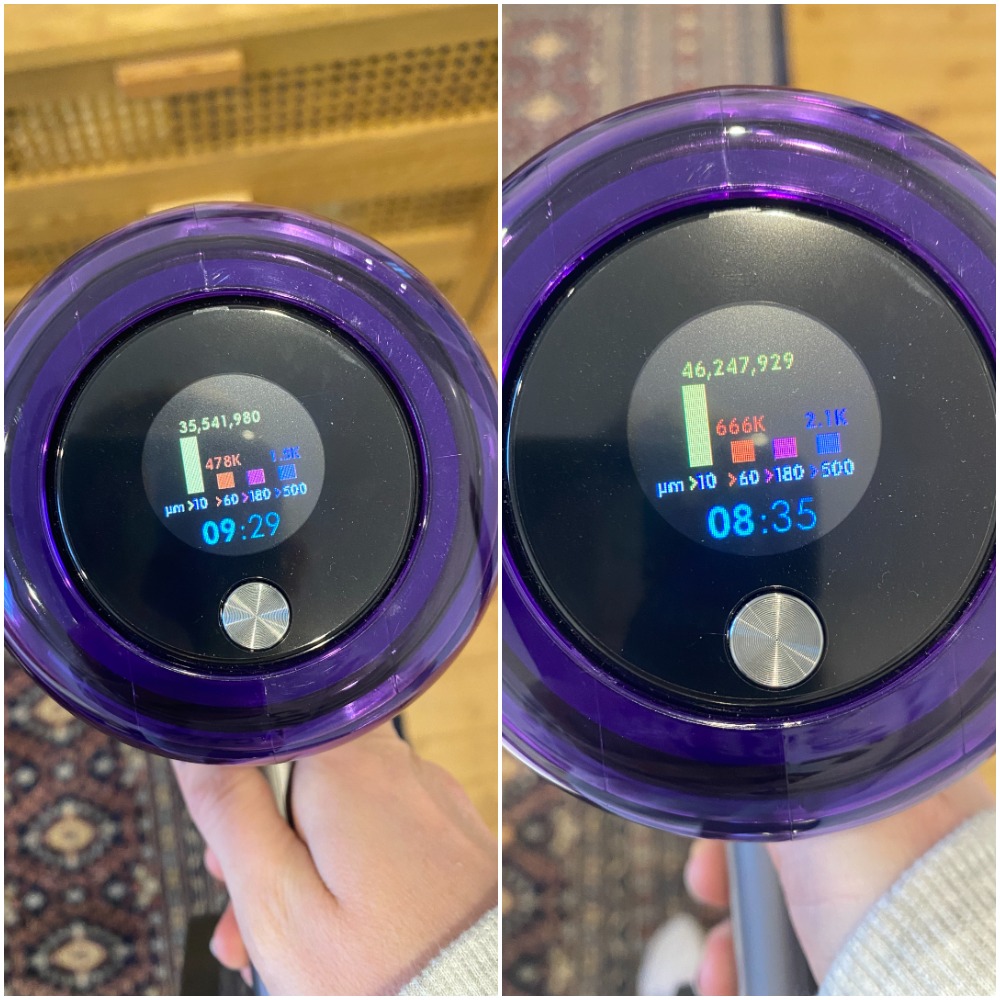
The main result here is that I want to stop writing this article IMMEDIATELY and go vacuum every possible surface in my house.
Is that healthy? Actually, yes. Like roughly one third of Aussies, I didn’t think there was anything ‘bad’ about dust, and like 60% of Aussies, I was not (until recently) aware that household dust is linked to viruses. (Source for both: a global Dyson study of more than 10,000 people.)
However, studies have shown that dust – both visible and invisible – can contain lead, zinc, copper and arsenic, which in turn can cause all sorts of respiratory problems.
Then there’s the dust mites, which can number from 100,000 to 10 million in your bed alone. Even when they die – which they will after 65 to 100 days – their faecal pellets, body parts and saliva will hang around. They tend to feed off dead skin cells, meaning that you’re more likely to find them where you spend the most time. Ready to vomit yet?
If you’re about to become an obsessively clean person, then here’s what else you should know about the Dyson. It comes equipped with a laser angled at a 1.5 degree angle to show you all the spots you still have to clean, and a cleaner head especially designed to prevent hair (both human and animal) from getting tangled. If you’ve ever spent a nasty 10 minutes cutting out the hair tangled in the end of your vacuum head, you’ll appreciate this one.
These bad boys aren’t cheap – they start at $1,399, with the fancy boy for big fancy houses coming in at $1,449 – but if you have the money and are currently facing a prolonged period of being indoors (thanks, lockdown), it might just be worth the splurge.







